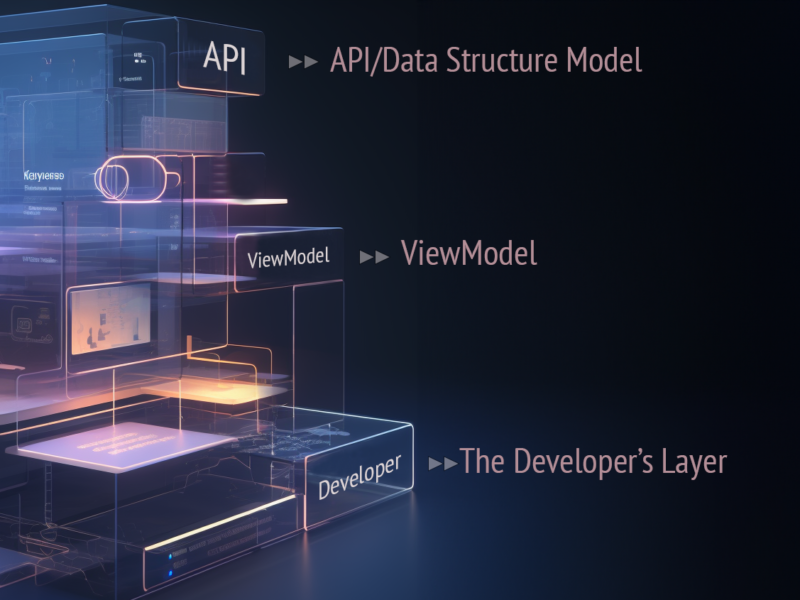
In the world of software development, crafting a user interface (UI) that seamlessly marries form and function is paramount. Behind the scenes, a well-structured UI architecture is the cornerstone of a smooth user experience. We often hear about the importance of the API/Data Structure Model and the ViewModel, but there’s a third layer that remains unsung, yet it holds the key to harmonizing the entire system. In this article, we’ll delve into the crucial trinity that constitutes a robust UI architecture.
The Foundation:
API/Data Structure Model
At the base of any good UI architecture lies the API/Data Structure Model. This layer serves as the bedrock, managing the data flow between the application and the backend. It defines how data is structured, stored, and retrieved, ensuring that the UI has access to the information it needs. This layer is akin to the unseen roots of a tree, providing stability and nourishment to the entire structure.The Artist’s Canvas:
ViewModel
The ViewModel is the layer that brings life to the UI. It’s responsible for serving the markup, determining how the data should be presented to the user. Roughly half of us are familiar with this layer, as it’s the part that interacts most directly with what we see on the screen. Think of it as the canvas upon which the UI elements are painted, ensuring they’re positioned and styled just right.The Unsung Hero:
The Middle Layer
Now, here comes the revelation – the third layer, the one that often lurks in the shadows, is arguably the most crucial of them all. This middle layer is the secret sauce, the linchpin that grants the programmer absolute control. It acts as a bridge between the API/Data Structure Model and the ViewModel, offering a vital breathing room for proper decoupling.


